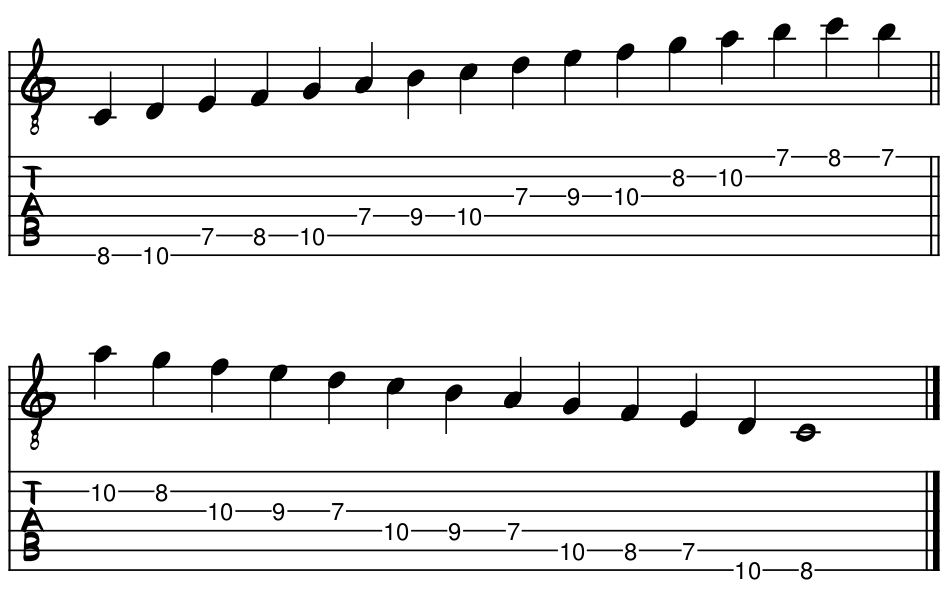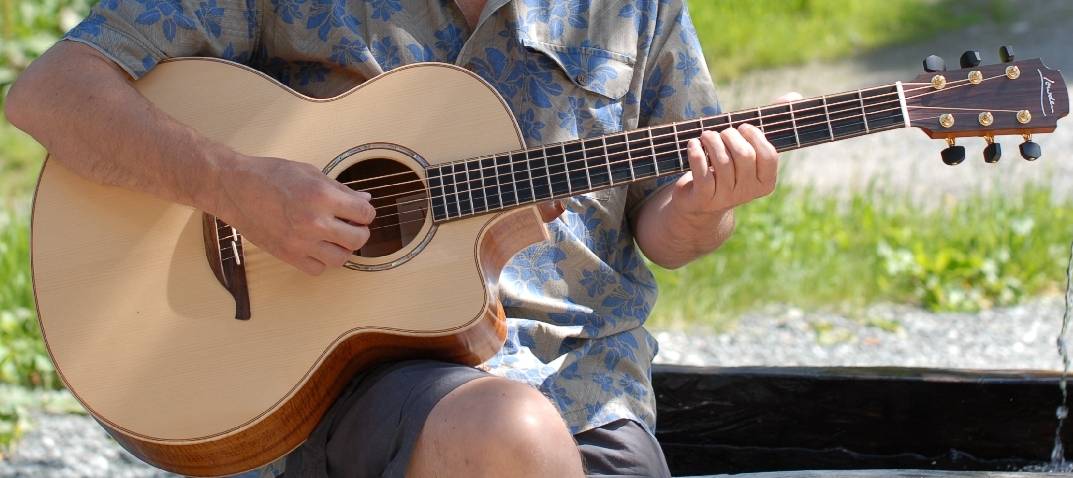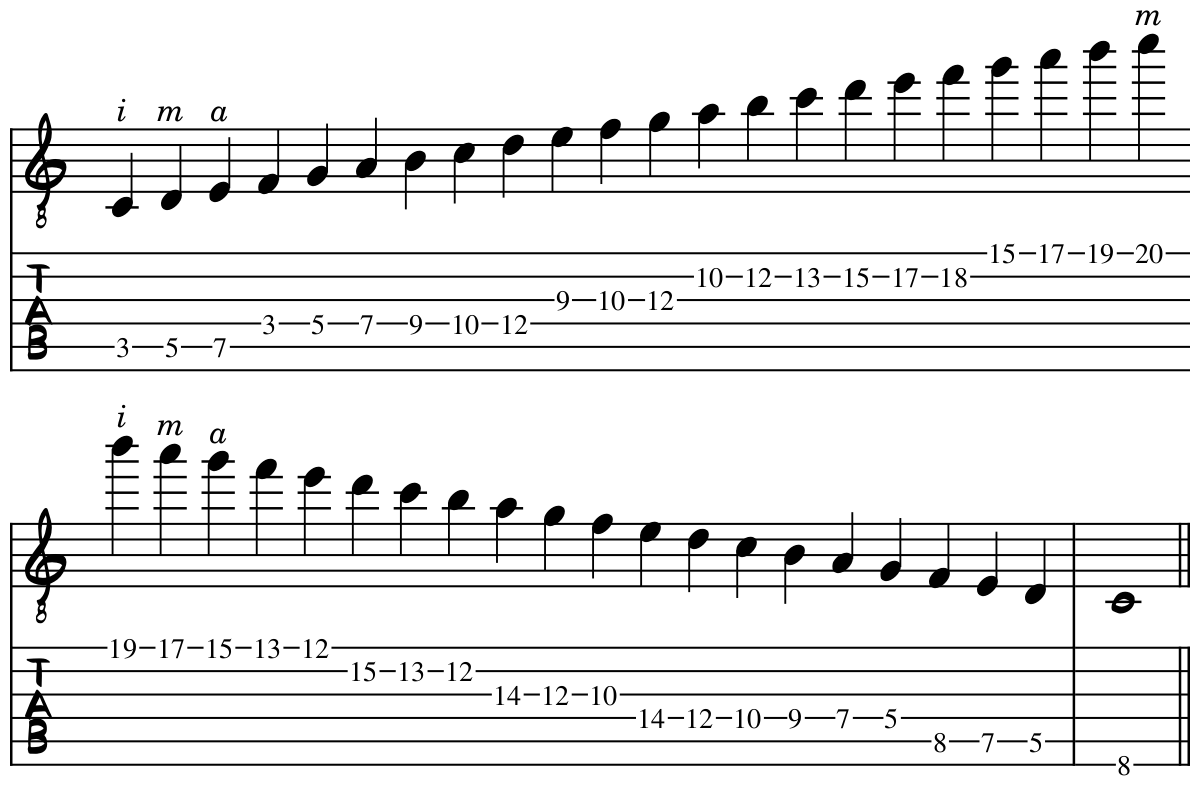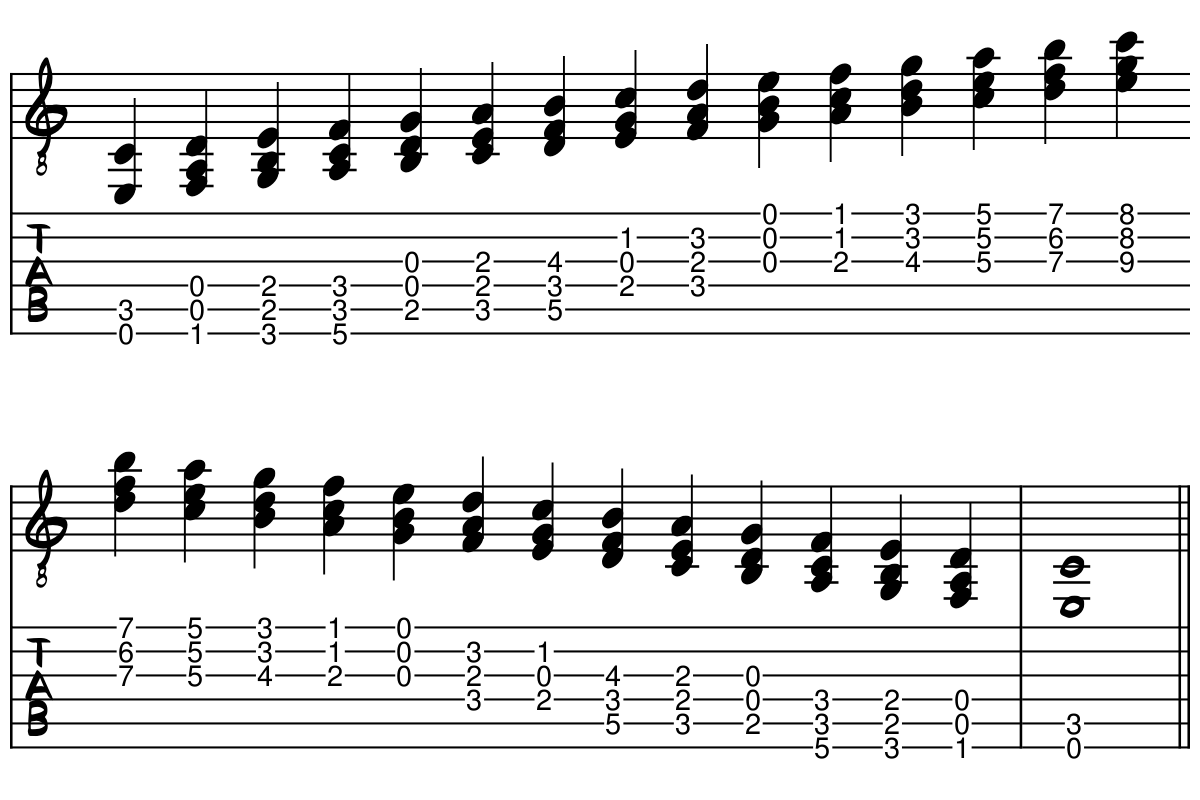Learn the best way to play the C Major Scale on the guitar with this guide.
The C Major scale is one of the most useful scales in Western music, and it's the building block to understanding music theory.
The C major scale is comprised of the notes C to C without any alterations (sharps or flats), giving you the notes C, D, E, F, G, A and B.
I will share with you my recommended finger picking pattern for the C Major scale on the guitar, which you can use with the other major scales.
Here's how to play the C major scale on the guitar, over one, two and three octaves.
The One Octave C Major Scale on Guitar
To play the C Major Scale in first position, you need to be able to locate the notes C, D, E, F, G, A and B, and also identify which notes are open strings.
Luckily for you, I've done all that hard work. Here is what the C Major scale looks like in first position, ascending and descending, using open strings.

How To Play The Two Octave C Major Scale On The Guitar
You can play the C Major scale starting from the eighth fret, ascending and descending over 2 octaves. You will commonly see this pattern for the 2 octave major scale, because you can move it anywhere across the fretboard and play a major scale.

Don't practice this pattern too much, though, because it's a trap and you won't be able to scale up your playing.
A better way to play the C Major scale over two octaves on the guitar is to use a 3-note-per-string pattern, which gives you the same number of notes per string to pluck, i.e. 3.

To play the C major scale for fingerstyle guitar, use a combination of index, middle and ring fingers or thumb, index and middle fingers of the plucking hand.
I talk more about using the correct plucking pattern for scales in my online course, Play Fingerstyle Guitar Now!
With the fretting hand, I prefer to use the first, second and fourth fingers.
How To Play The Three Octave C Major Scale On The Guitar
If you want to play the C major scale over 3 octaves ascending and descending on the acoustic guitar, I sure hope you have a cutaway.

Because if you're aiming to reach the 20th fret on an acoustic guitar, you're going to need a cutaway to reach those high frets more easily — unless you're okay with getting into some seriously awkward positions to stretch for those higher notes!
Here, I'll prove it to you: Behold, the three octave scale on the guitar, adapted with the 3-note-per-string fingering pattern.
Notice how the right hand finger pattern switches as you reach the top of the scale. You'll want to start with i,m,a and starting on the high G note in the descending scale switch to a,m,i. In between just alternate between m and i.

I warned you. Without a cutaway to reach those high frets, you're going to be reaching around the guitar body to play the top notes.
Maybe it's time to bust out the electric guitar to play the C major scale over three octaves.
The C Major Chordal Scale
Just kidding. Put away your electric guitar and throw away your pick because it's time for us to learn the C major chordal scale.
We're going to create the chordal scale by stacking each note from the scale on top of one another, selecting those which are a distance of a third apart, and creating triads which are tertian.
If that sounds complicated, all you need to accomplish it is know the alphabet and be able count to three.
Since we are working with C Major, we are going to create some nice sounding chords, as always in first inversion:
- C (I): E - G - C(C major triad)
- D (ii): F - A - D (D minor triad, first inversion)
- E (iii): G - B - E (E minor triad, first inversion)
- F (IV): A - C - F (F major triad, first inversion)
- G (V): B - D - G (G major triad, first inversion)
- A (vi): C - E - A (A minor triad, first inversion)
- B (vii°): D - F - B (B diminished triad, first inversion)
Here is what it looks like when you play that on the guitar.

And if you're thinking, hey, your first chord only contains two notes, when a chord is supposed to have 3!
Unfortunately, most of us don’t have a seven-string guitar, and to play the first triad would require playing two notes on the sixth string, which is not possible.
Therefore, I've omitted the fifth of the chord (the note G) which still retains the major character of the first chord.
Furthermore, this chordal scale goes over two octaves, meaning you'll need to use barre chords for most of the second octave. If you hate barre chords just play the scale over 1 octave and call it a day, or get my barre chord guide.



